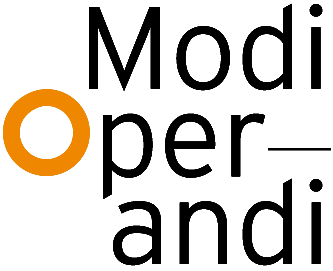CRITICAL ZONE AND CRITICAL ZONE OBSERVATORIES: CONCEPT AND FIELDWORKS
First of all, a few reframing comments on the critical zone, but especially on what are the critical zone observatories. The study of the CZ is a scientific program with a complex research infrastructure. In France, the CZOs have been structured into a national infrastructure called ‘OZCAR’[13] , labelized and funded by various research institutions. The National US network is ‘CZO’ and funded by the NSF National Program[14] . The international links are strong: scientists move from one observatory to another, exchange data, build research papers together, etc. The specificity of CZ science is the instrumentation of landscapes. Indeed, the critical zone observatories (CZOs) are at the forefront of geoscience in developing new sensors to cover the different dimensions and variables needed to understand the effects of the Anthropocene at the territorial scale. The concept of the critical zone (CZ) refers to the Earth’s habitable layer, ‘between the rocks and the sky’. The CZ observatories are located in landscapes chosen as sentinels of environmental disturbances to study water, soil, air, living organisms and their interactions, in which processes are studied at all timescales (or ‘timescapes’). CZOs are highly instrumented places with sensors to monitor soil depletion, chemical water pollution, biodiversity loss, over the long term and how these processes are coupled and interfere in places of living. Critical zone scientists thus make a pragmatic contribution to notions such as the Anthropocene[15] , the New Climate Regime or Gaia[16] , terms that are becoming more widespread among the environmental humanities. Therefore, in the observatories, geoscientists decompose landscapes, through their observations of soil, rivers, and atmosphere. Scientific instruments and practices monitor various natural features over the long term, in order to trace their unexpected trajectories. This knowledge can bring a new understanding of territories and the Earth, more attuned to the various cycles and their overlapping dynamics.
In contrast to the IMS which focuses on seismic, infrasound, radionuclide and hydro-acoustic monitoring observation and identified by Brouwer’s project[17] , the critical zone observatories record many other parameters such as geochemistry, hydrology, pedology, etc., as scientists from different disciplines address complex environmental problems. This is the paradigm of the CZ, a network, a method and a concept: the uniqueness and strength of CZ observatories lies in the scattered nature of the instruments that cover the landscape. For what scientists are looking for is the movement of the Earth’s entities. The meteorological station is therefore, for example, located at the top of the CZO, at the highest point, while the riverlab (a laboratory for studying the river) is located at the lowest point, at the mouth of the river, meters down below. Then soil samples, gutters under trees, baskets to collect leaves, etc. are scattered on the ground in the watershed so that scientists can follow the movements of chemical particles. Where do the calcium and phosphorus needed by the plants go, accumulate or leave, or where do pollutants, nitrates, etc. go? What scientists are trying to do is to understand the biogeochemical cycles through the earth’s layers, both laterally and vertically. Therefore, there is not one single location to monitor the critical zone but several. The CZ is a network of instruments, just as CZOs are a network of observatories across many locations on Earth. The CZ is necessarily multi-site and networked.
In the CZ observatories, importance is given to outdoor laboratories, with sensors spread across the landscape, as scientists need to gather multiple (and non-centralized) viewpoints, as there are many variables to understand the landscape. Also, the logic of watersheds requires attention to the whole territory, not just one point: scientists measure the ‘entry point’, the ‘exit point’ and ‘everything in between’. This reinforces the importance of landscapes as instrumented places. Sometimes scientists use low-tech, low-cost instruments, and sometimes an entire, expensive geochemical laboratory is brought in. The different ranges of instruments are also the specificity of the CZ.
The project presented by Brouwer does not emphasize this specificity, although it mentions it: ‘Critical Zone science is conducted through a wide variety of sensing devices and monitoring instruments. An investigation into the sensing devices used in Critical Zone science has been made through an inventory. This inventory includes devices such as acoustic emission sensors, gravimeters, atmospheric sensors and seismometers. The inventory reveals the large amount of sensing devices used in critical zone science, their specific conditions and required infrastructure.’ But then this fundamental parameter is dismissed by suggesting a new one: ‘The project facilitates these different sensing devices and combines them in one single project to understand the Critical Zone as one complex system. The project distributes the sensing devices used to research the Critical Zone in one single project’. Therefore, there may have been confusion between the scales of the concept of the critical zone – as a holistic approach to studying all compartments of the earth – on one hand, and the critical zone observatory – as the physical location where the critical zone is studied, on the other hand. In the following, I will try to show that the scientific paradigm of dispersed objects is necessary for this science, but that it can also make us reconsider architecture and landscape.
